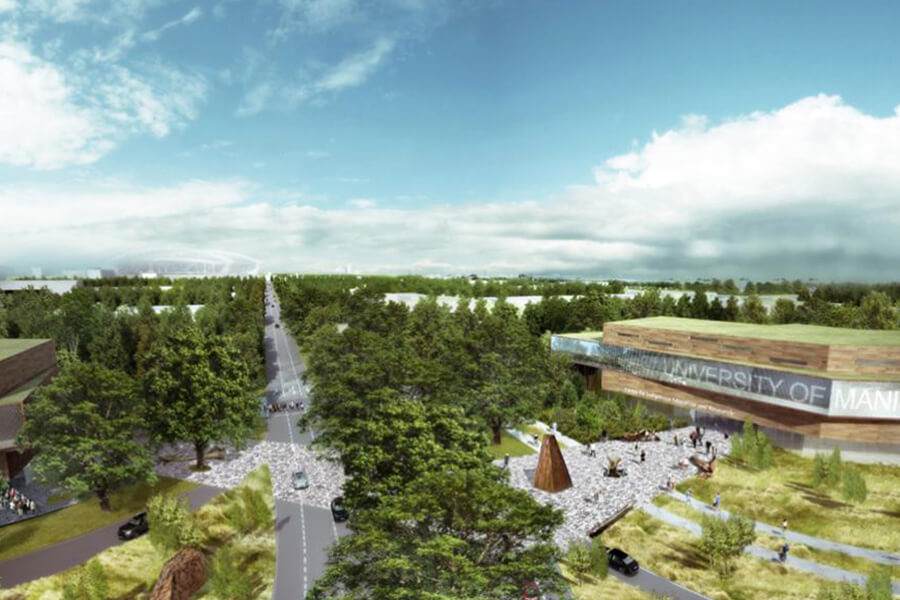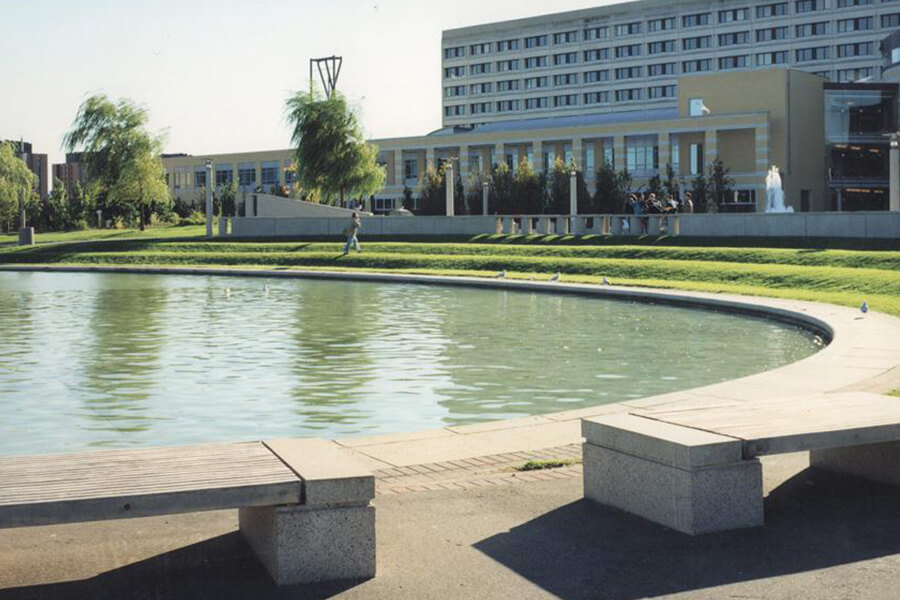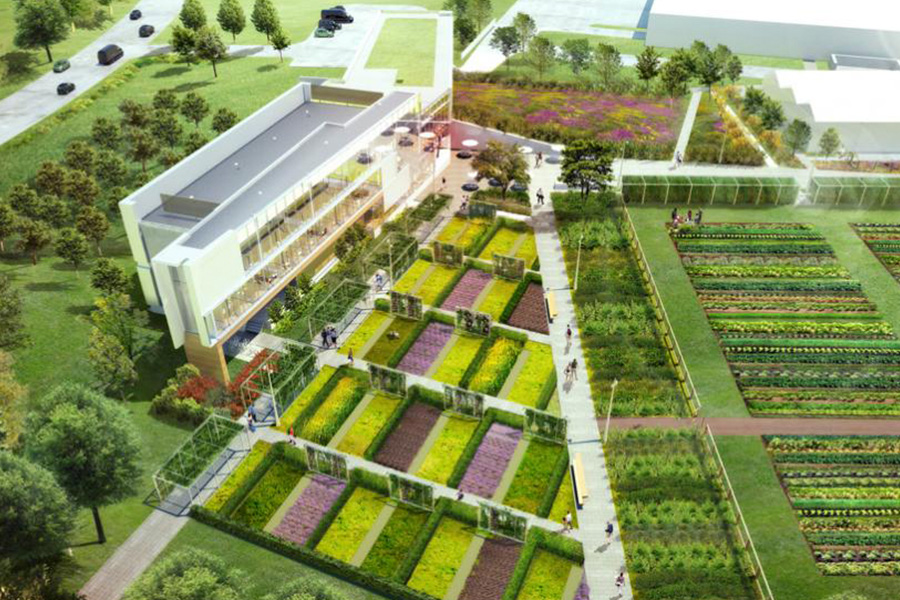
University of Toronto
Landscape of Landmark Quality Innovative Design Competition
Client
University of Toronto
Location
Toronto, Ontario
2015
Shortlisted Finalist
Design Team
Janet Rosenberg & Studio (Project Lead, Landscape Architect)
architectsAlliance (Architect)
ERA Architects (Heritage Architect)
Hoerr Schaudt Landscape Architects (Landscape Architect)
Urban Forest Innovations Inc. (Urban Forestry and Arboricultural Consultant)
Jeffrey L. Bruce (Landscape Architect)
BA Consulting Group (Transportation Planner and Engineer)
exp. (Civil and Structural Engineer)
Éclairage Public (Lighting Designer)
Entro (Environmental Designer)
Turner Townsend [Cm2r] (Construction Engineer)
Aquafor Beech (Environmental Engineer)
Photography Credit: JRS and The Flat Side of Design
This proposal explored the tension and interplay between two landscape orders that had shaped the historic campus.
The overall picturesque character of this area reflects the University’s origins with University College established in the 1850’s as a complex within a park-like setting. We recognized that historically the building that is University College has existed in two historic and simultaneous expressions of the campus: first as the icon in the Beaux-Arts formal axial view from King’s College Road, and second as the building element that is seen in historic depictions across McCaul Pond, as the nostalgic view captured in the picturesque style.
To complete the formality of the axis we inserted a geometry that also completes the symbolic reading of the space as represented by the importance of the buildings in the passage of a student, from being a visitor to becoming an alumnus. This added metaphor to the role of the circle. We have also recognized the monumentality of the space as it relates to more than the ground elements in the experience of standing in the middle of the lawn and looking up. The choice of the Elm further defined the sky beyond the adjacent rooftops. A stone bench rings the perimeter of the lawn, as well as the edge of the 440-meter skating trail, recalling the value of the skating rink in the rearing of Canadians. With vehicular traffic reduced through the proposal for parking below King’s College Circle, space was liberated at the corners to echo the flexibility of the timeless European city square.
At the same time, many of the relationships between the four iconic spaces that define the boundary of the competition were diagonal ones rather than the more typical cardinal routes. The four “corners” of the Front Campus, in their connections to the spaces beyond, had very different identities. Moreover, whereas the Beaux-Arts in King’s College Circle is interpreted as dominant, our treatment suggestsed that the formal geometry of the lawn still allows for another landscape “voice” to co-exist beyond the circle, one that is looser in its principles of order in the landscape. The necessary identities were achieved with the choice of tree species through the consideration of the timing of leafing and leaf drop, leaf size, branch structure and habit, canopy width, and the heritage and cultural associations of each species. In other words, the unification of the ground plane permits the treatment of each of the plazas in its planting palette to respond to the appropriate ‘picture’ for each of these corner plazas.
Most significantly, the dynamic relationship with Queen’s Park North strongly suggests that it be restored into the historic conception of a continuous and fluid linkage between King’s College Circle, Hart House Circle, and Queen’s Park North. This notion fell into a broader understanding of the roles played by King’s College Circle in its relationship with circulation routes that tie into it from outside. Our ultimate goal was to call for the removal of the overpass and restore an at-grade condition. In the interim, our renderings indicated a new bridge that is phased in within an anticipated window of opportunity in the coming ten years – in terms of the necessary repair or replacement of the existing structure built circa 1940.







